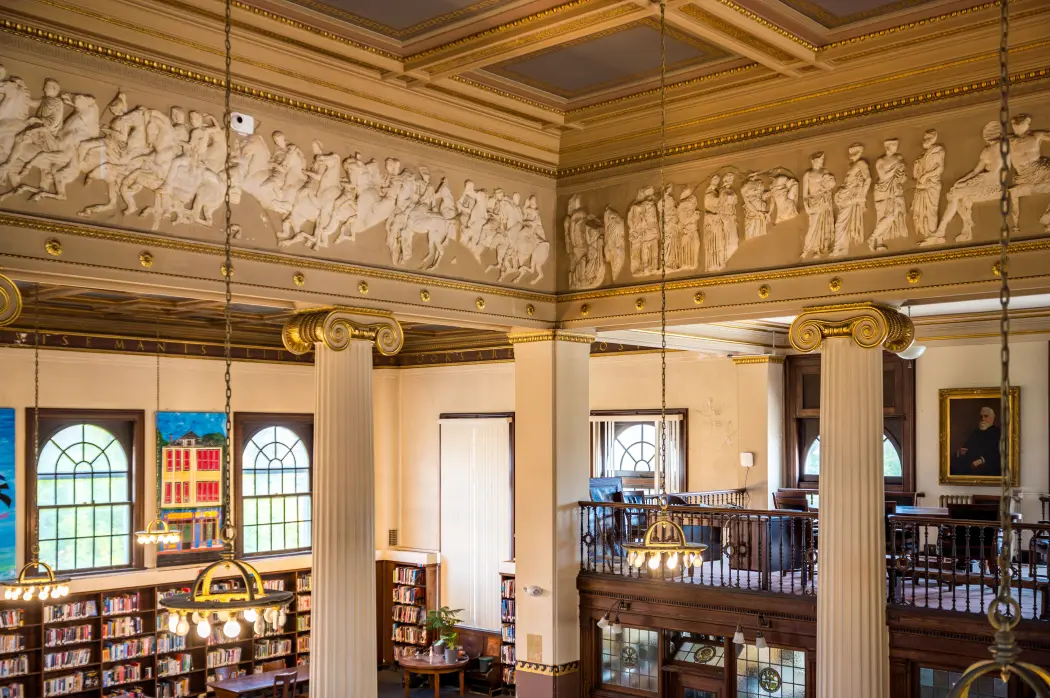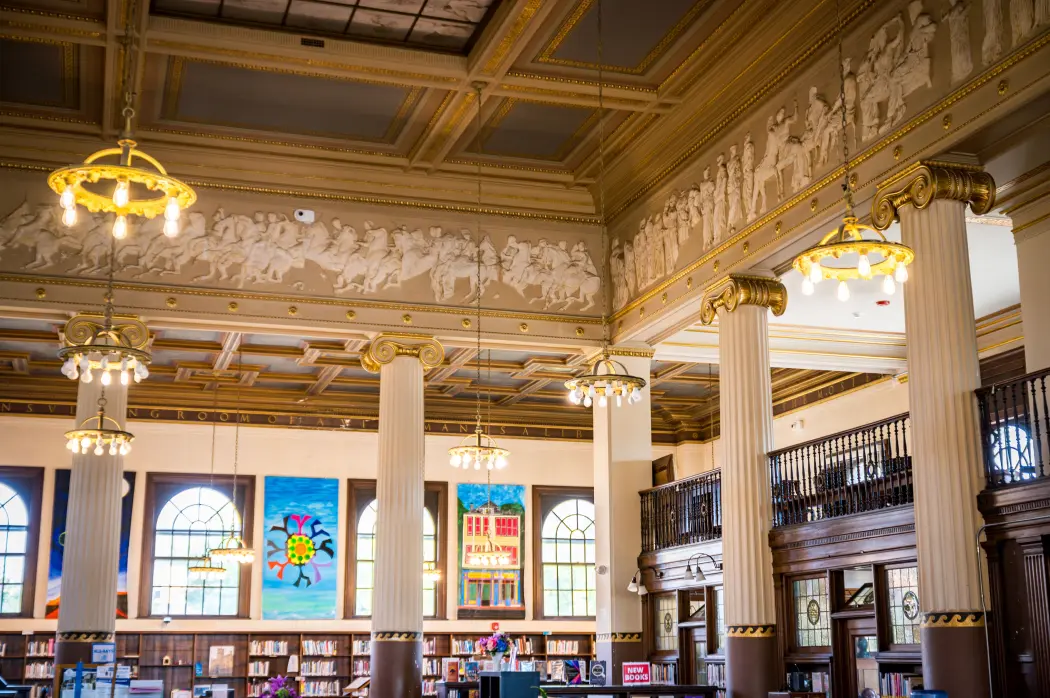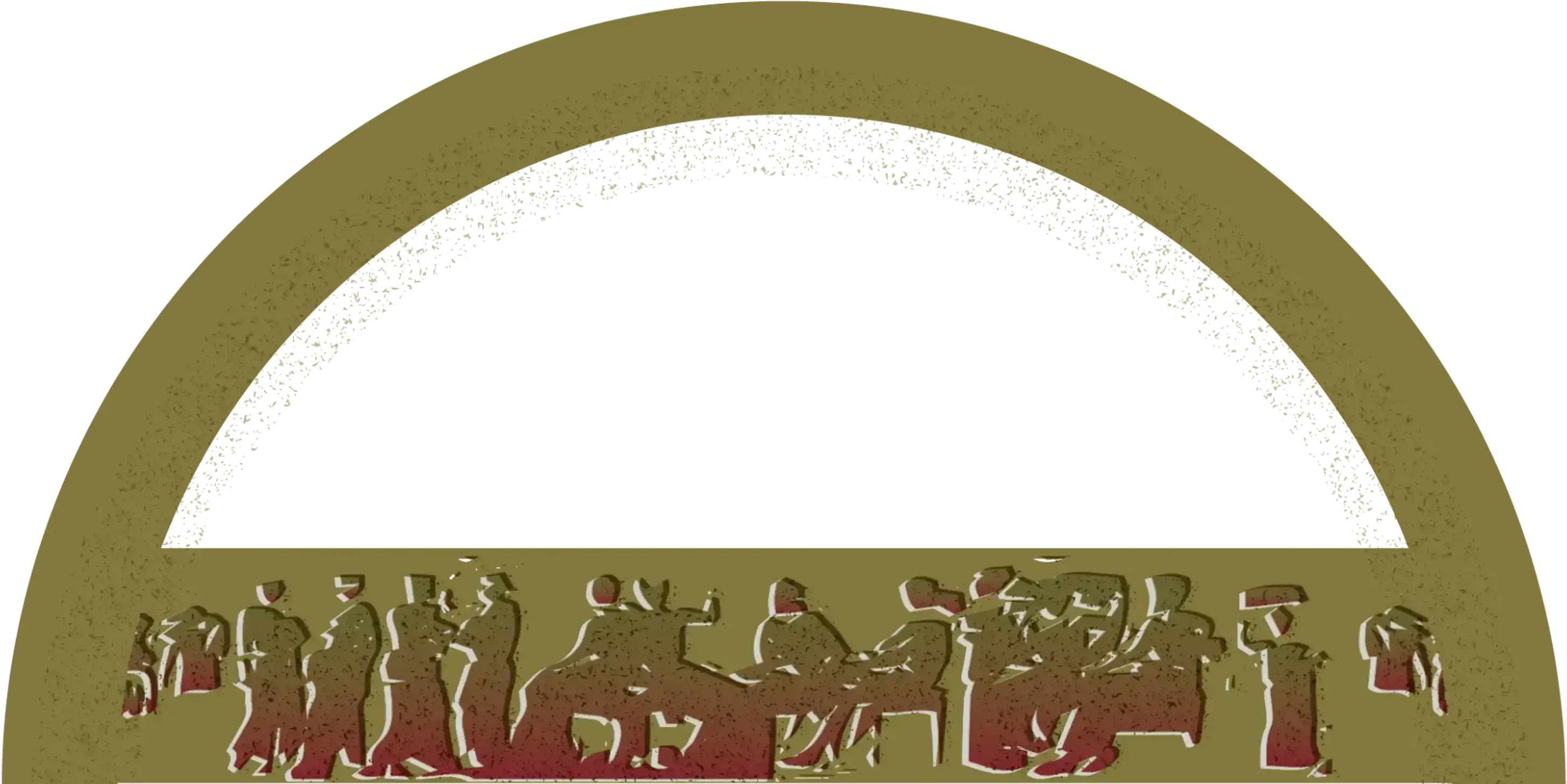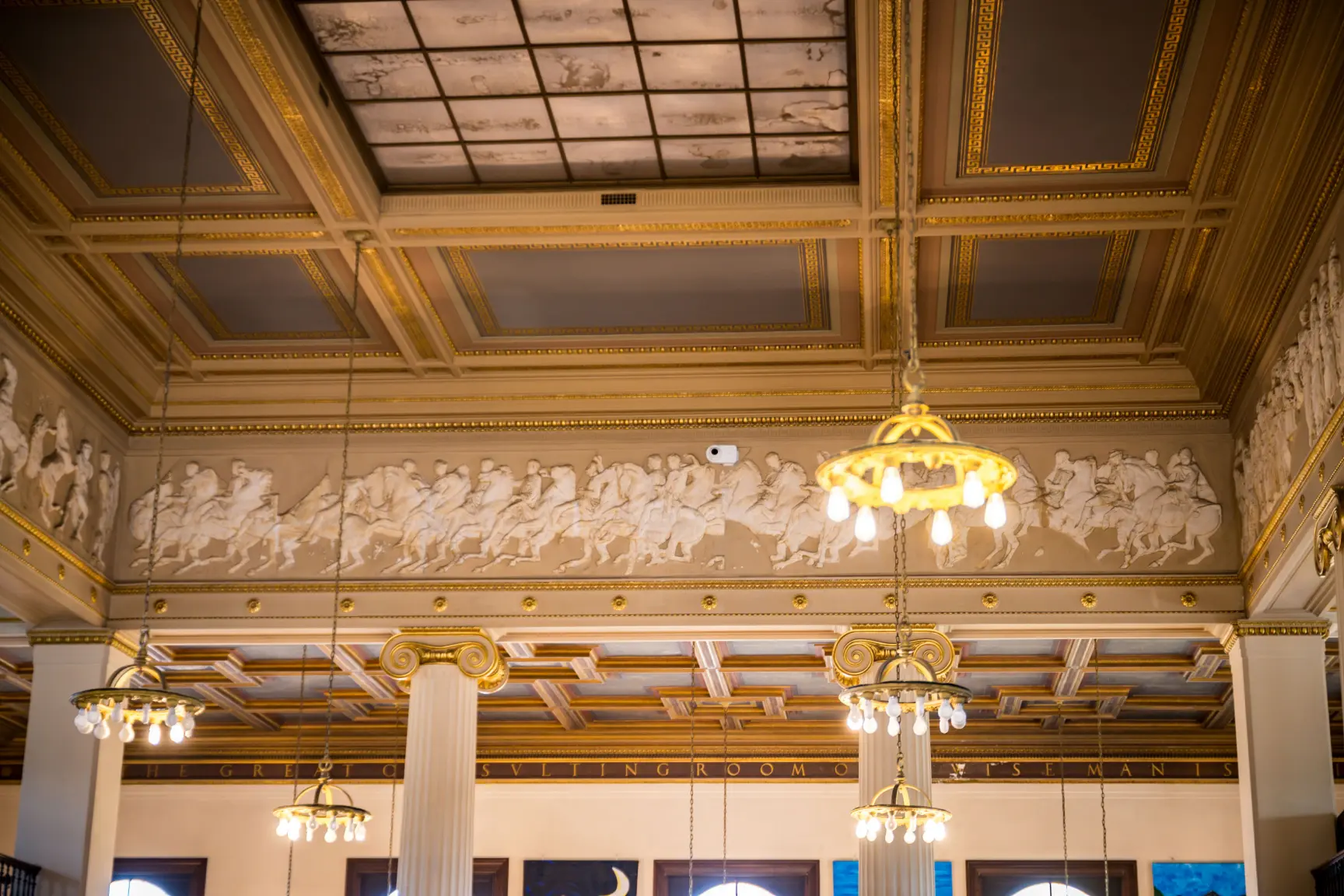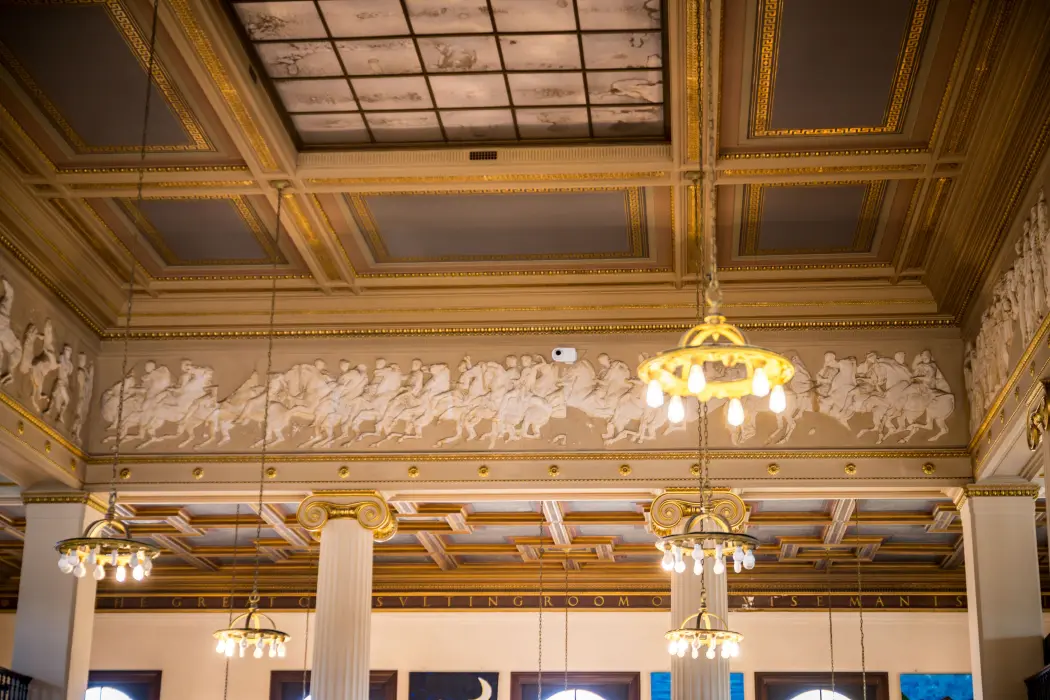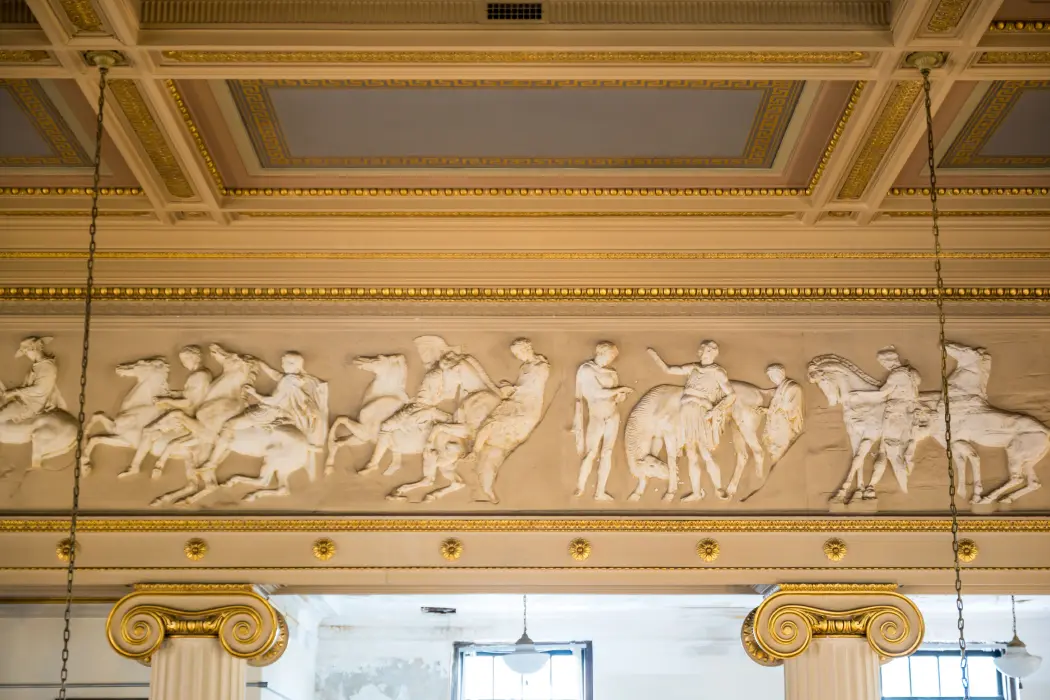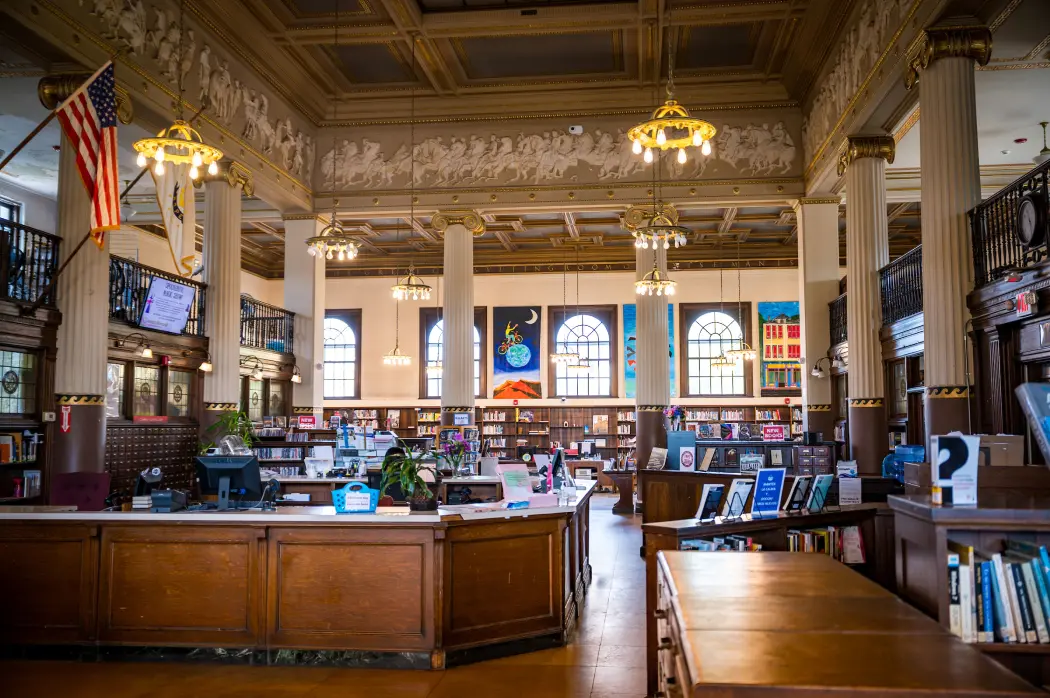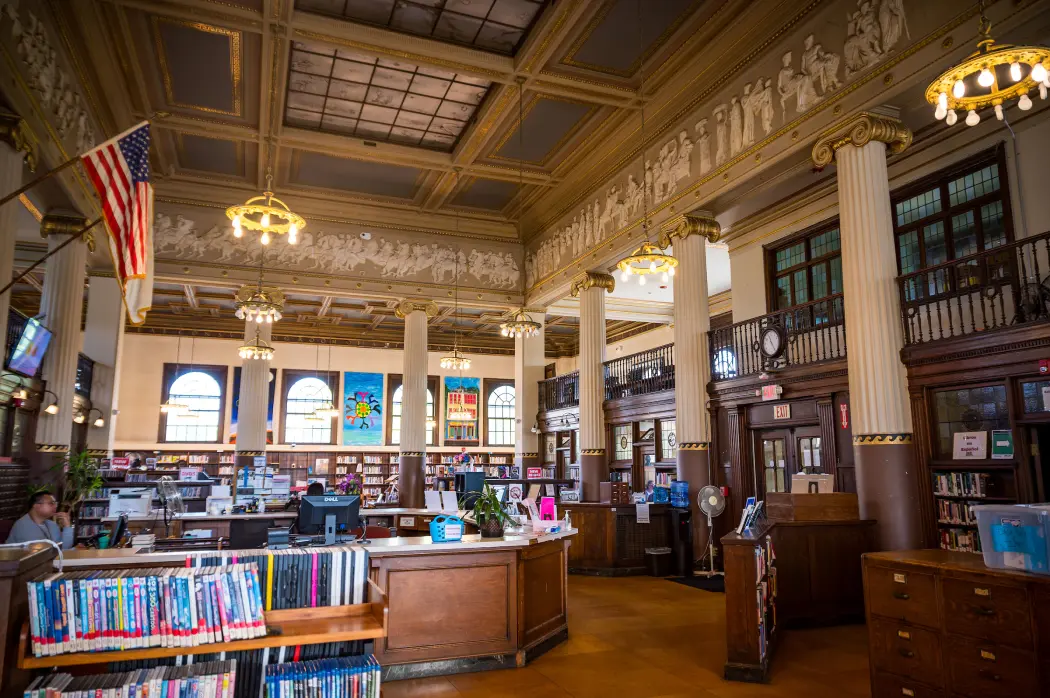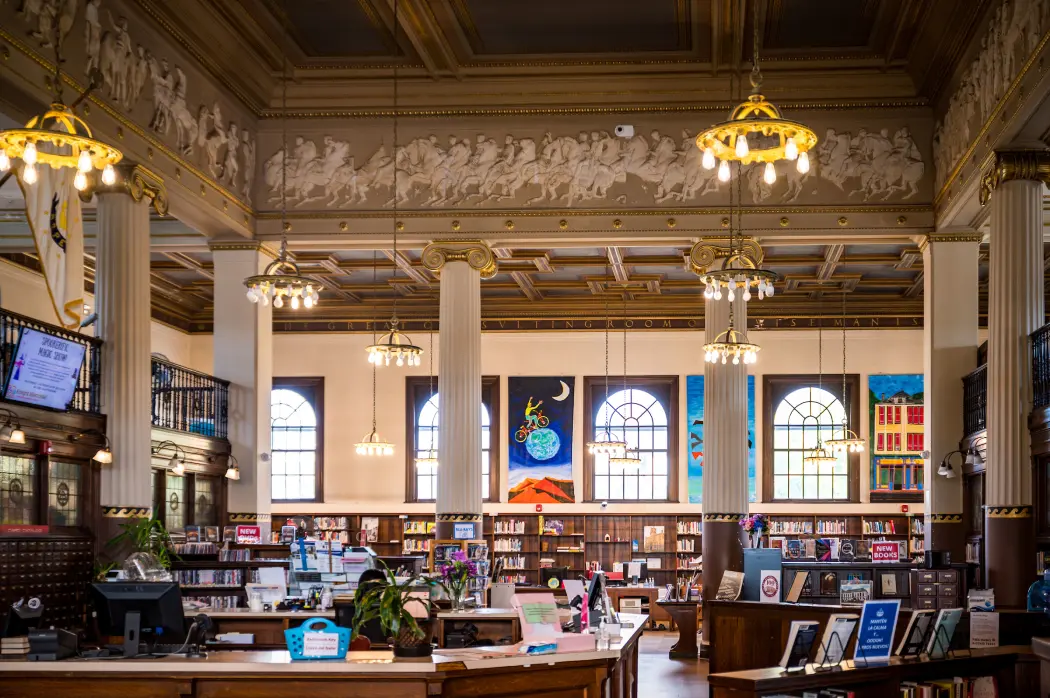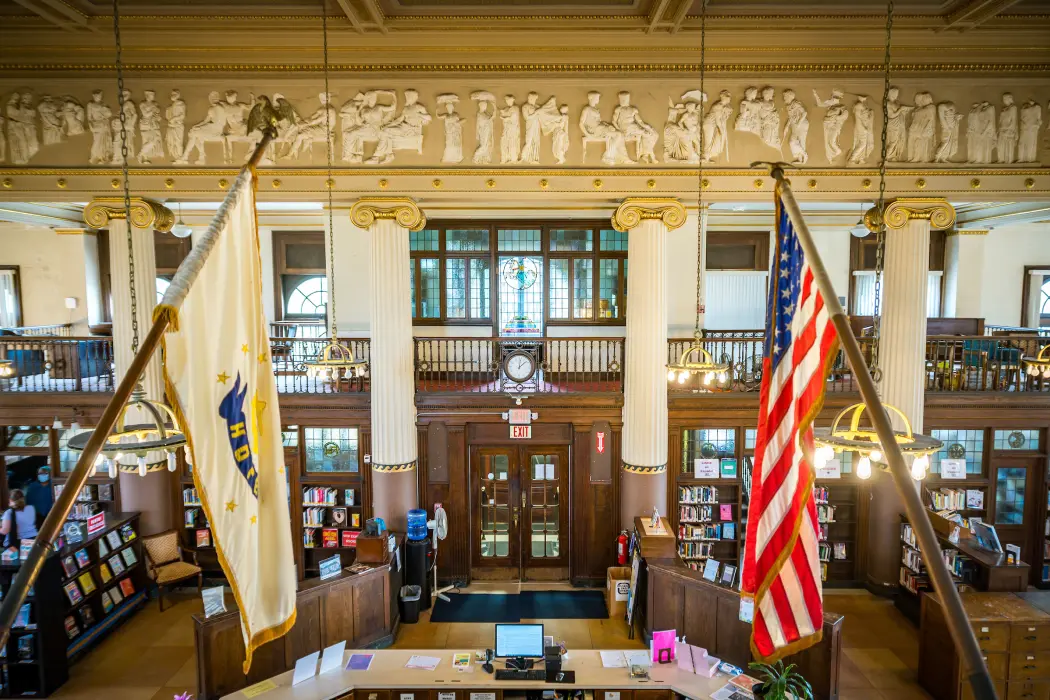




Frieze
The white plaster frieze that surrounds the top of the library’s circulation area was cast from the band of marble sculpture found in the Parthenon, a temple dedicated to the goddess Athena which was built in the 5th century BC on the Acropolis in Athens, Greece. Designed by the sculptor Phidias, and executed by many carvers, the Parthenon frieze, which originally would have been brightly painted, depicts scenes from the quadrennial festival of the Panathenaiaa, which celebrated Athena, the city's patron goddess.
The architect of Knight Memorial Library, Edward L. Tilton, who designed approximately one hundred libraries, spent a year teaching ancient architecture at the American School of Classical Studies at Athens and also worked as an excavation architect. That experience surely inspired his use of the Ionic columns and sections of the Parthenon frieze in Knight Memorial, as well as designs for other libraries built in Wilmington, Delaware, and Springfield, Massachusetts.
The casting of the plaster frieze in this building was done by renowned Italian craftsmen at the Caproni family workshop in Boston, based on molds from the original sculptures, which are now in the British Museum, London. The workshop continues as the Caproni Collection in Woburn Massachusetts, and still sells casts made from the early 20th century molds.
First Floor
Ceiling
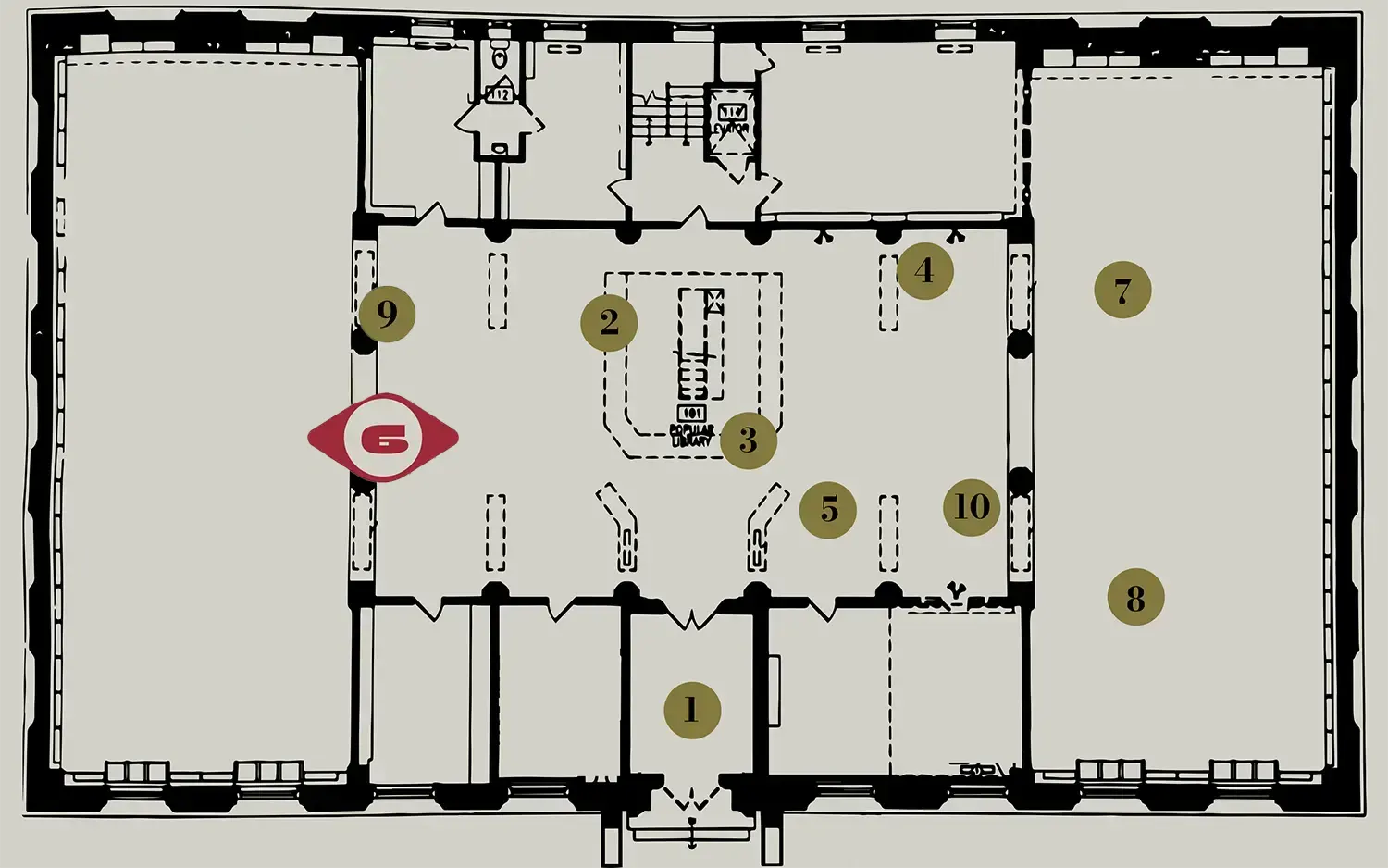
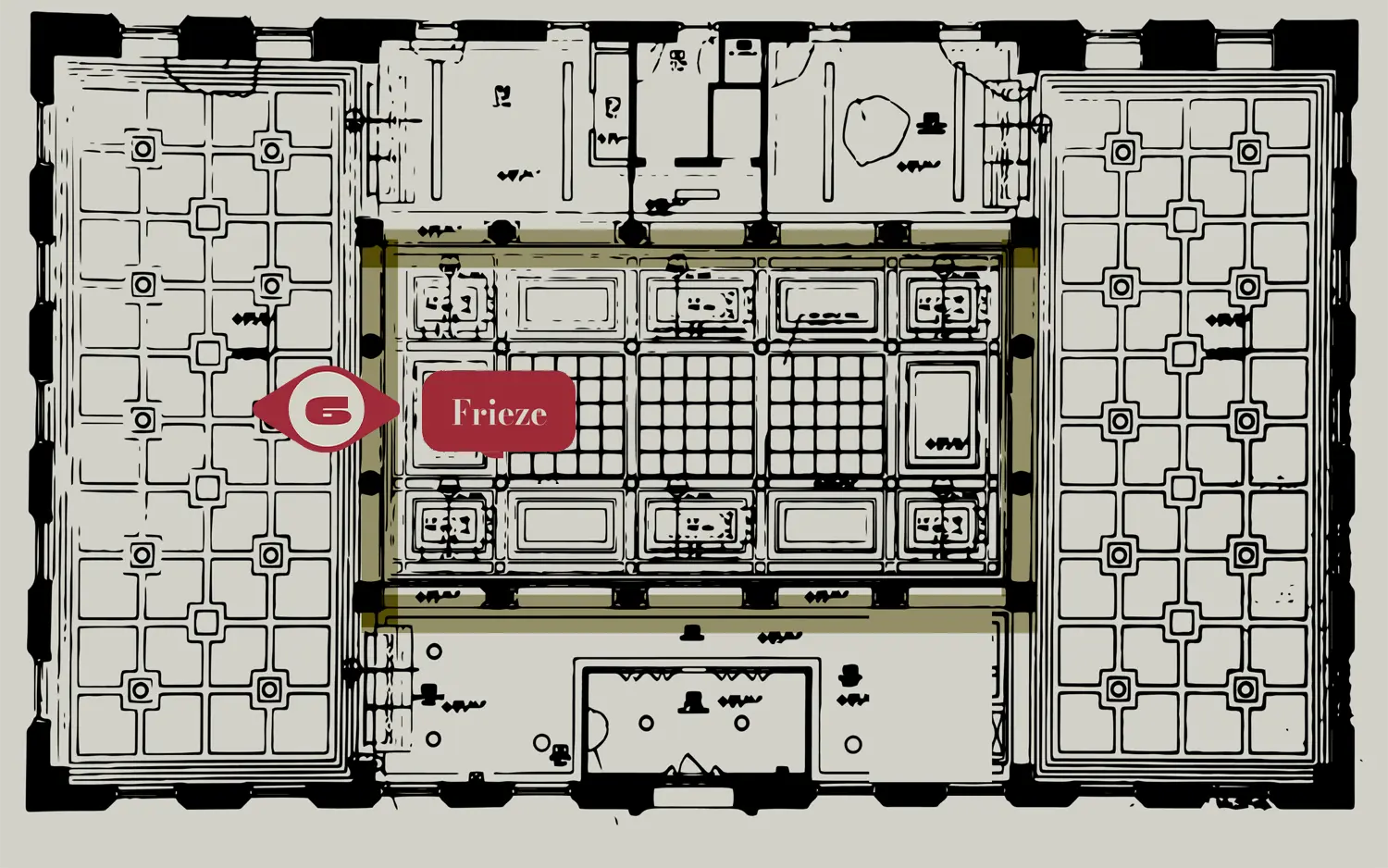


About the Parthenon scene: the frieze features a procession of young horsemen proceeding to the culminating scene, which is seen above the entrance to the library. The outer figures on either end of this scene depict walking women, worshippers bearing vessels for offerings, and mature men with beards. They flank seated figures on either side, each identifiable as a specific god or goddess (listed below), which in turn flank a central scene of ritual. This central section, with two women carrying folded textiles faced by another woman, then a bearded man holding a large folded textile helped by a child, is not well understood. The traditional interpretation suggests that the women have presented a ceremonial garment to the priest of Athena, accompanied by a young boy. A more radical interpretation sees the bearded man as a legendary king of Athens about to sacrifice his three daughters to the goddess to save the city.

